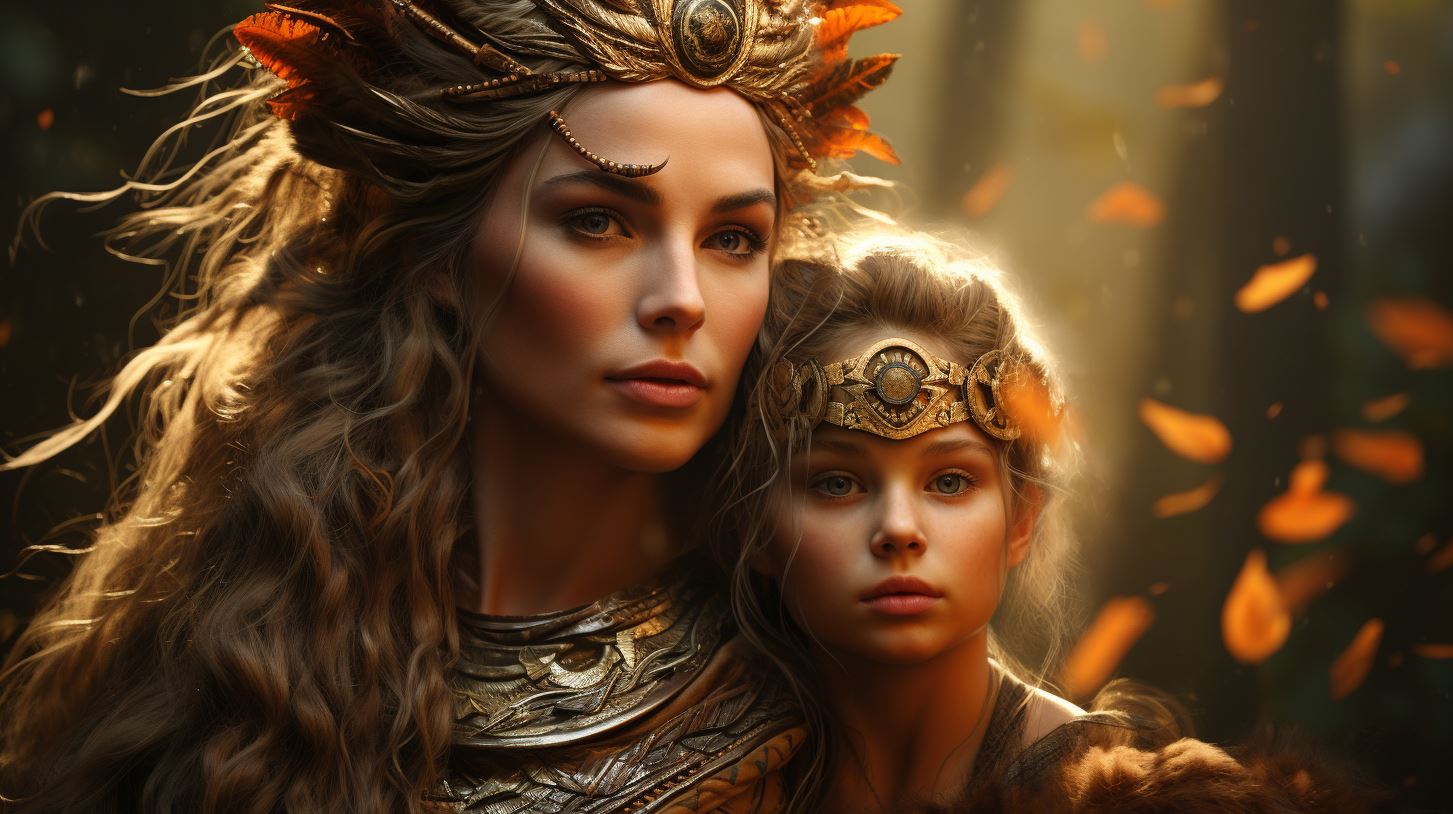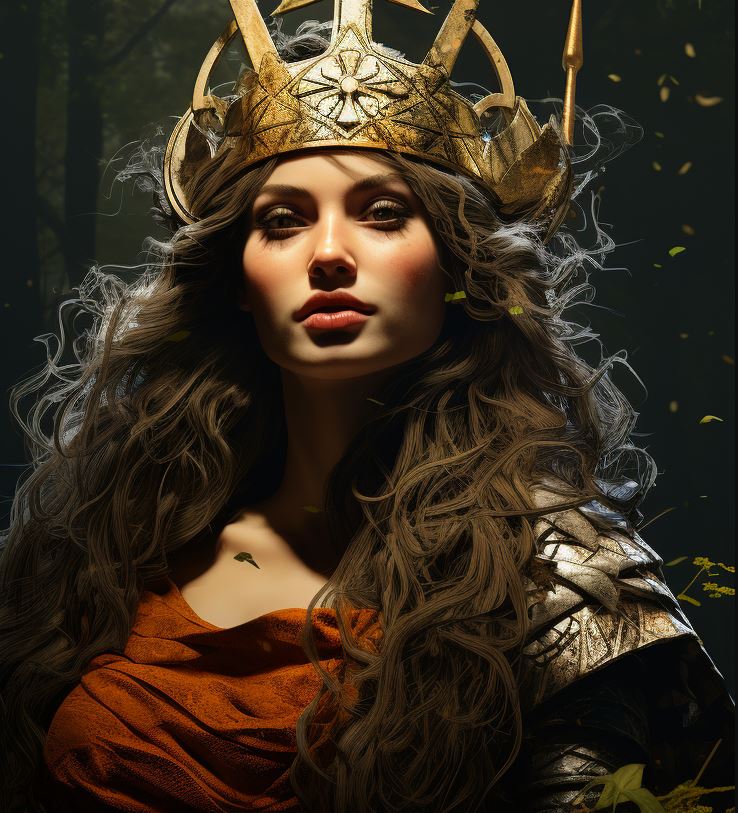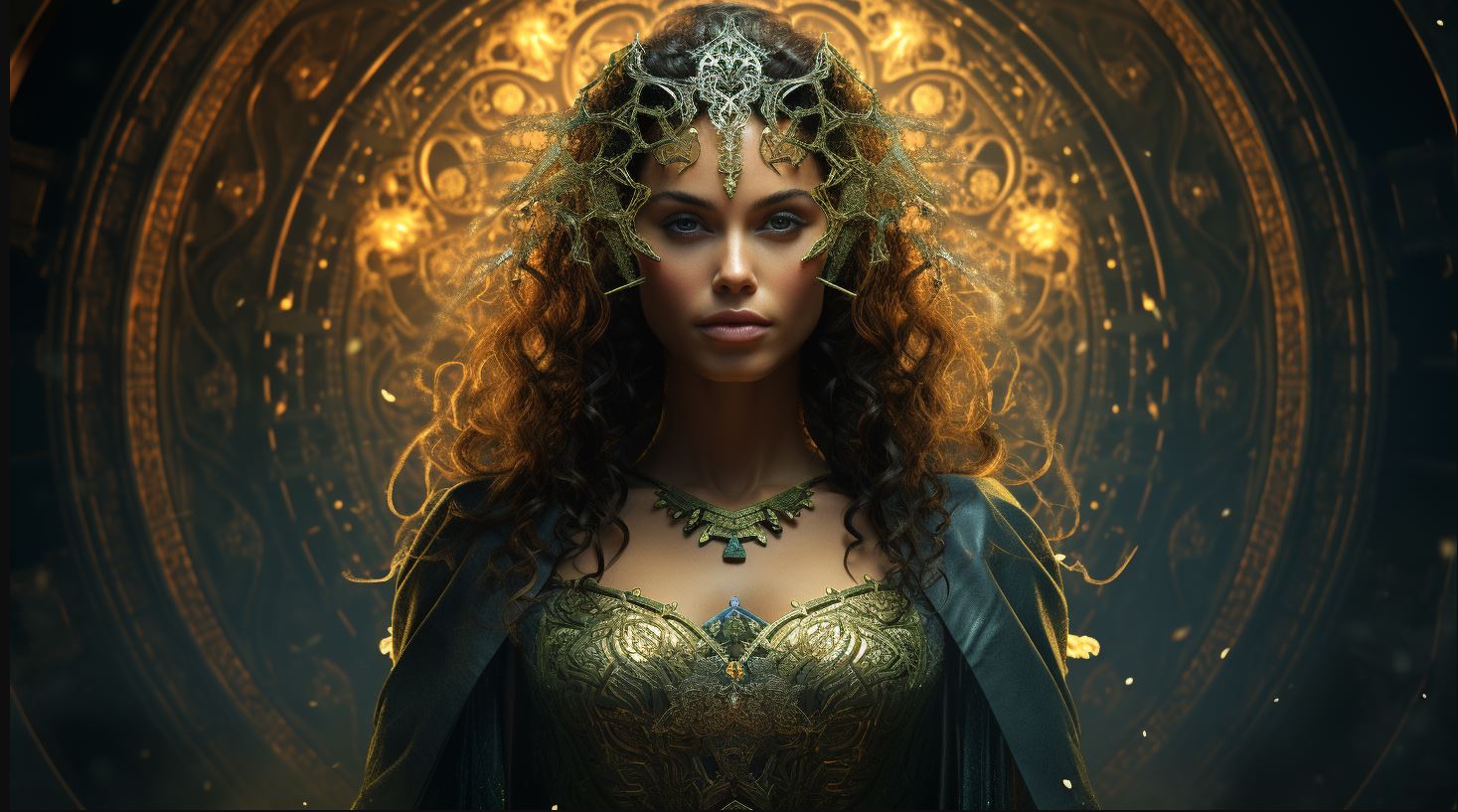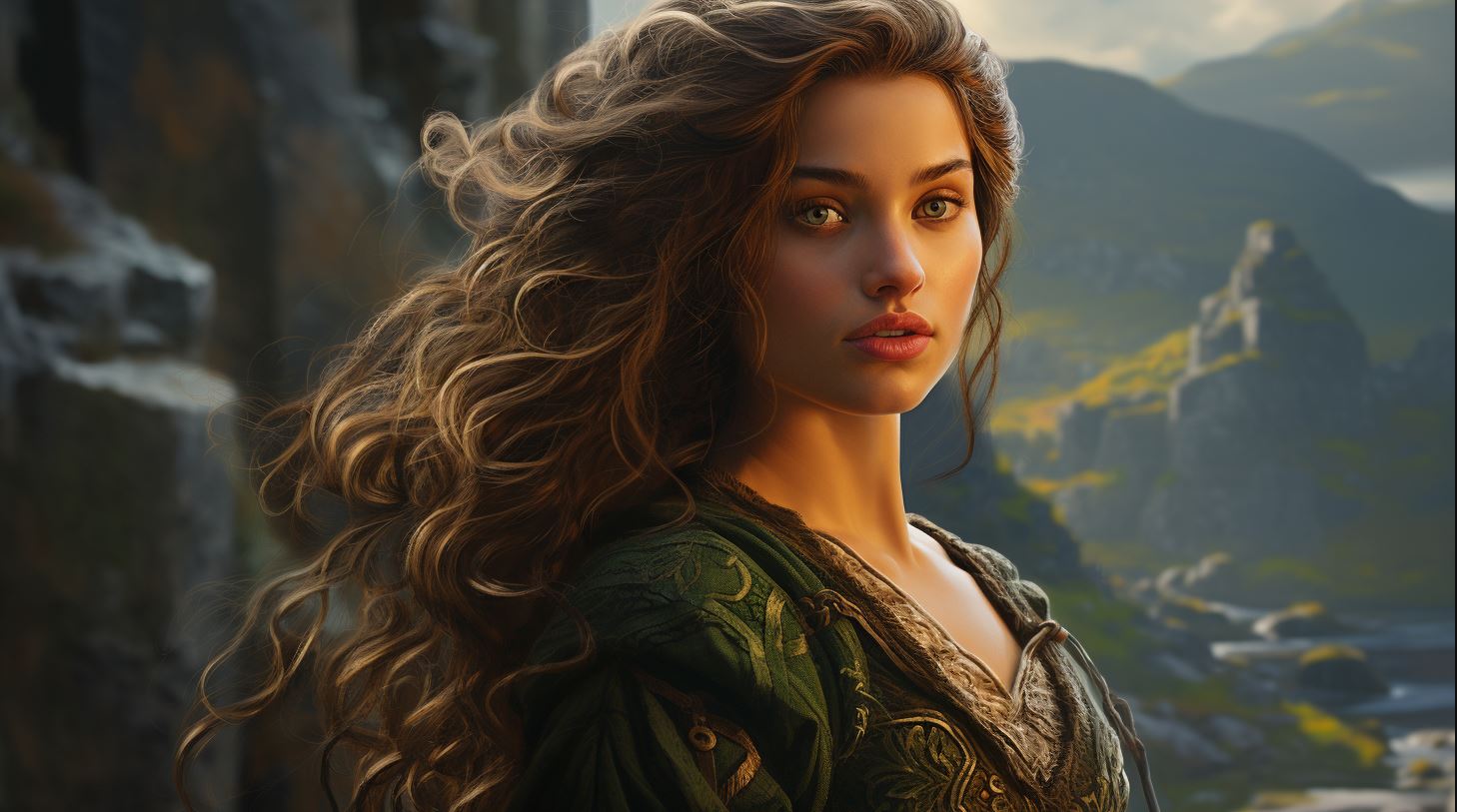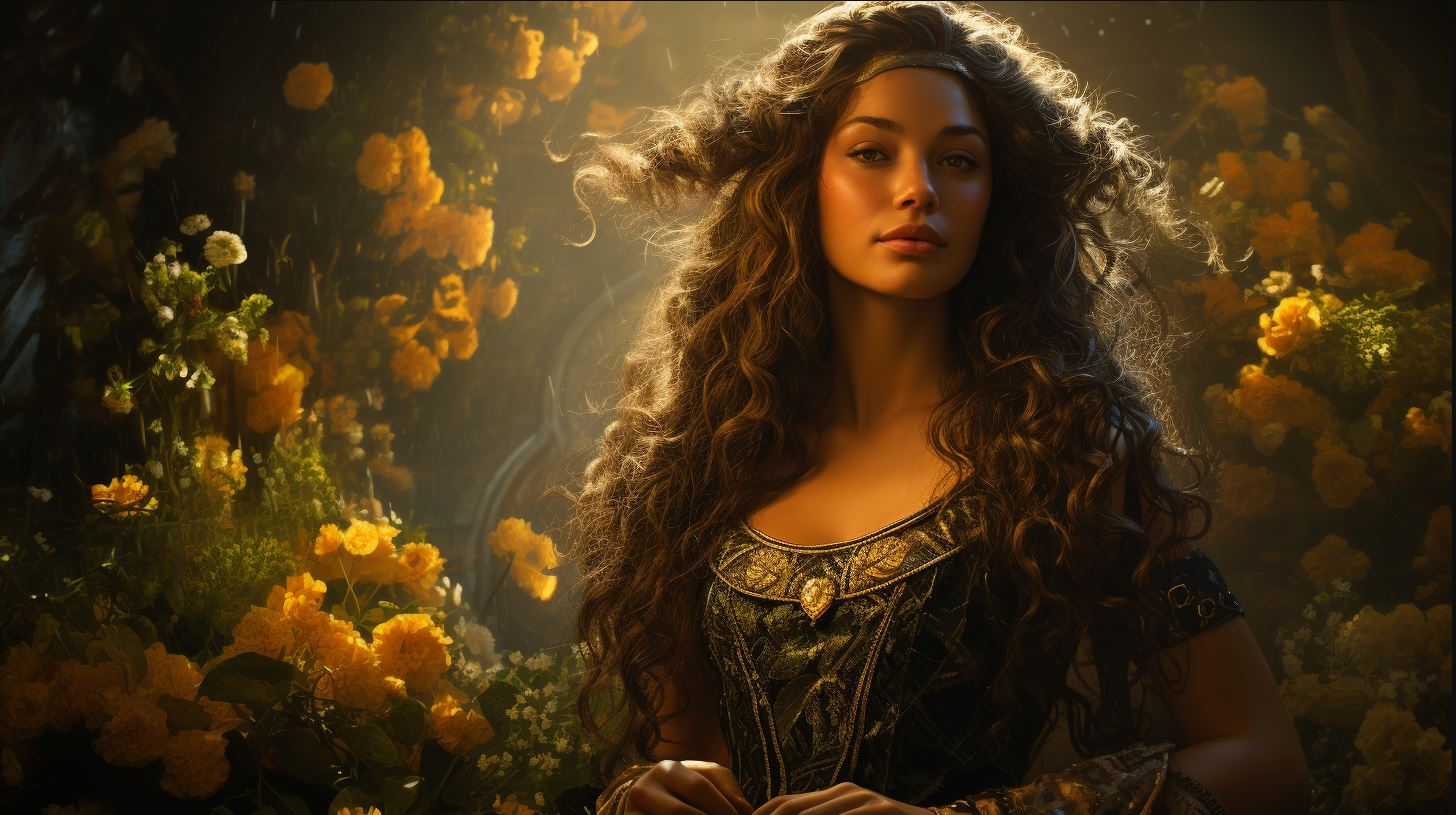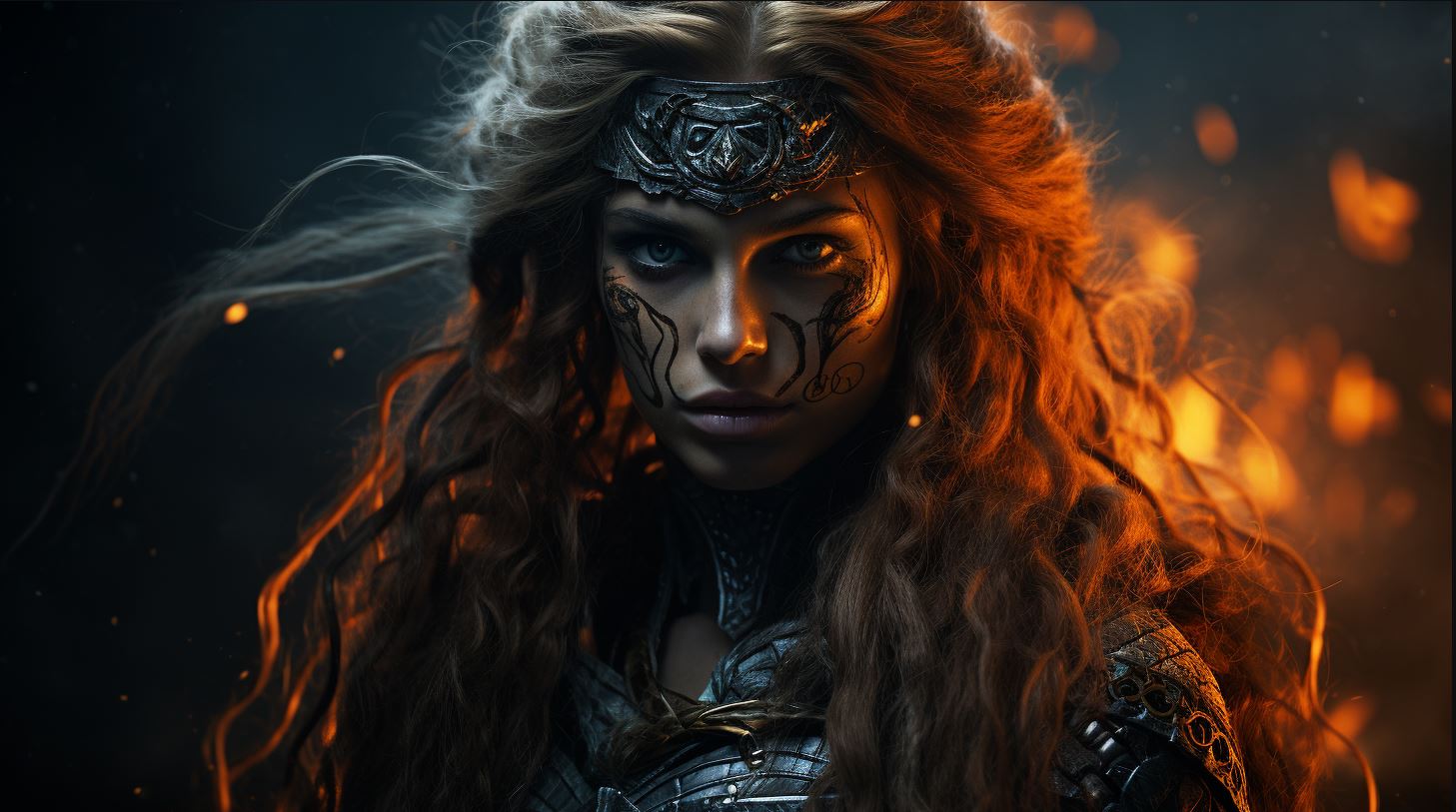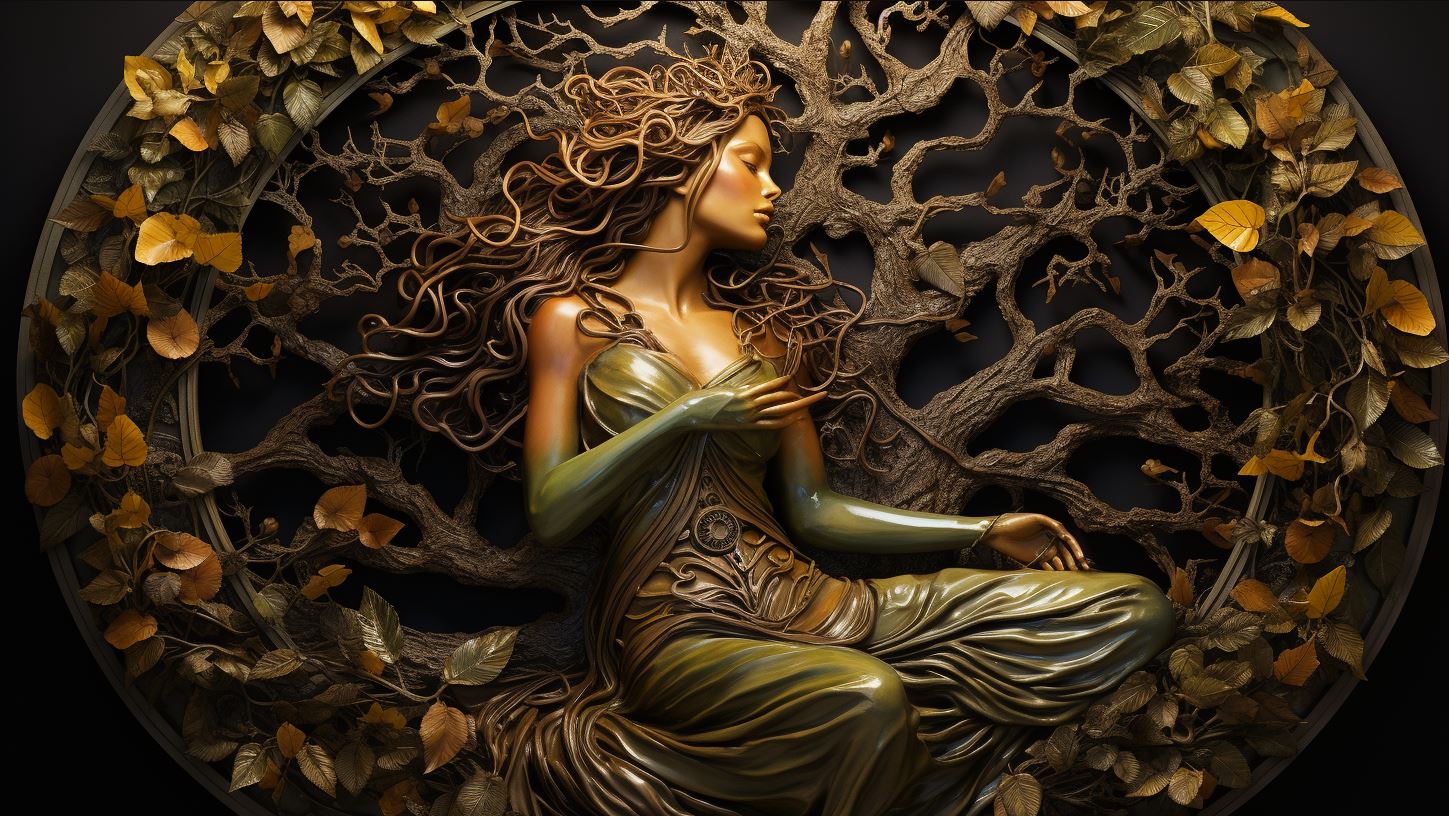The Powerful Boann: Unraveling the Mysteries of the Celtic Goddess
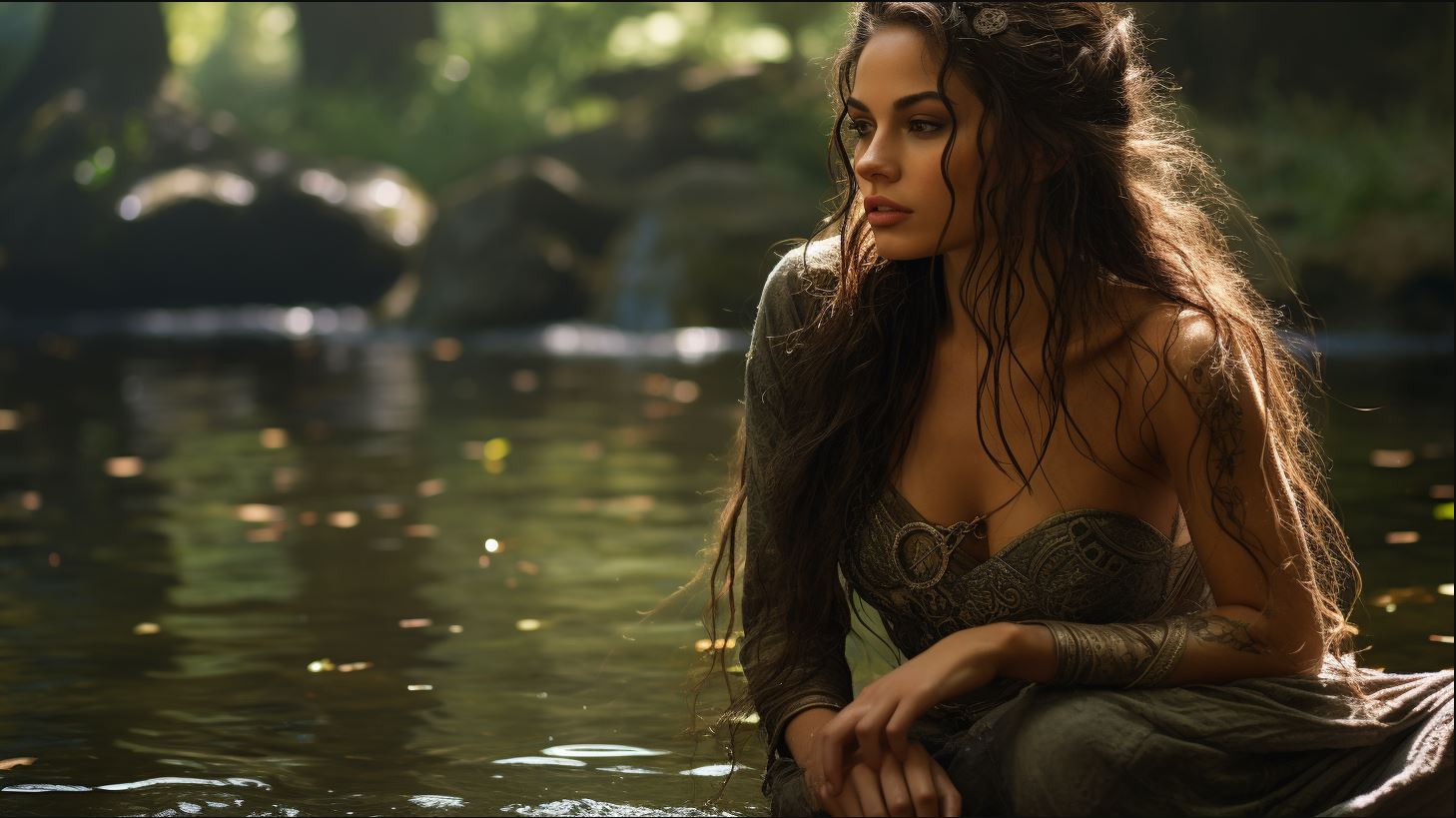
Boann, the Celtic goddess, holds a significant place in Irish mythology. She is known for her associations with the rivers and the sun’s rebirth. Boann’s relationships with Elcmar, Nechtan, and the Dagda play a crucial role in her story.
Aengus, her son with the Dagda, symbolizes new beginnings and renewal. Additionally, Boann’s defiance of Nechtan’s prohibition led to the creation of the River Boyne. Exploring Boann’s connections with other characters like Befind and Fráech reveals further facets of her mythological presence.
Discover the captivating legends surrounding Boann, the majestic Celtic goddess.
Origins of Boann in Irish Mythology
Boann, a prominent figure in Irish mythology, has captivating origins intertwined with various intriguing relationships and narratives. Exploring her mythology sheds light on the rich tapestry of Celtic folklore. The stories surrounding Boann provide insight into the ancient beliefs and customs of the Celtic people.
In this section, we will delve into her relationships with Elcmar and Nechtan, as well as her affair with the powerful Dagda.
Boann’s Relationship with Elcmar and Nechtan
Within the realm of Irish mythology, Boann’s journey begins as the wife of Elcmar or Nechtan. Her role in their lives is significant, and through their union, she is intricately woven into the tapestry of ancient Celtic lore.
The legends surrounding Boann and her connections to Elcmar and Nechtan unveil a complex web of love, devotion, and intrigue. Delving into these stories provides a deeper understanding of Boann’s place within the mythological landscape.
Boann’s Affair with the Dagda
Beyond her relationship with Elcmar and Nechtan, Boann’s mythological journey takes an unexpected turn with her affair with the Dagda, the god of the Earth. Their forbidden love transcends societal norms, and the consequences of their actions reverberate throughout Celtic mythology.
Exploring the complexities of Boann’s affair with the Dagda unveils layers of passion, desire, and the inevitable clash between mortal and divine realms. This captivating story sheds light on Boann’s character and her significant role in shaping the mythological narratives of the Celtic world.
Aengus: The Son of Boann and the Dagda
Aengus, the son of Boann and the Dagda, holds a special place in Celtic mythology. His conception carries deep symbolism, and his role in the rebirth of the sun showcases his significance in the pantheon of gods.
The Symbolism of Aengus’ Conception
Aengus’ conception is closely linked to the solstice of winter, a time associated with new beginnings and the return of light. The name Aengus itself signifies “a desire,” highlighting the importance of his existence as the embodiment of the Dagda’s longing.
As the only child resulting from the union of Boann and the Dagda, Aengus represents the fulfillment of a powerful wish. His birth symbolizes hope, promise, and the cyclical nature of life.
Aengus’ Role in the Rebirth of the Sun
Aengus plays a crucial role in the rebirth of the sun, contributing to the perpetual cycle of light and darkness. As the son of the Dagda, he inherits the qualities associated with his divine father and becomes an agent of renewal.
Just as the sun rises each day, Aengus embodies the awakening of warmth, growth, and vitality. His presence signifies the transition from the darkness of winter to the blossoming of spring, evoking feelings of optimism and rejuvenation.
Through his connection to the sun’s rebirth, Aengus becomes a symbol of transformation and the eternal cycle of life, emphasizing the profound influence of celestial entities in Celtic mythology.
Conclusion
Aengus, as the son of Boann and the Dagda, holds great significance within Celtic mythology.
His conception and role in the rebirth of the sun highlight his role as a symbol of desire and renewal. As we explore the captivating tales of Boann and her son Aengus, we discover the enduring power and symbolism of these ancient Celtic deities.
Boann and the Creation of the River Boyne
Boann’s connection with the River Boyne is a significant aspect of her mythology. This section explores her defiance of Nechtan’s prohibition and the tragic fate that befell her.
Defying Nechtan’s Prohibition
Despite her husband’s strict prohibition, Boann couldn’t resist the allure of the Magical Well of Segais.
Against his wishes, she approached the well and daringly walked around it in a counterclockwise direction. This brazen act of disobedience had unintended consequences.
As Boann circled the well, the waters began to surge, rushing out violently and transforming into a tremendous river.
The River Boyne was born, and it flowed with great force, defying Nechtan’s attempts to control and contain it.
The Tragic Fate of Boann
Unfortunately, Boann’s disobedience and the resulting creation of the River Boyne came at a devastating cost. As the waters of the newly formed river surged, Boann was swept away by its powerful currents.
In the tumultuous flood, Boann suffered unimaginable injuries. She lost an arm, a leg, and an eye, paying a tragic price for her defiance. The River Boyne was a constant reminder of both her disobedience and the immense power she possessed.
Boann’s story serves as a cautionary tale about the consequences of challenging the natural order. It emphasizes the untamed energy and force of nature, as well as the potential dangers that arise from disregarding established boundaries.
- Defiance of Nechtan’s prohibition
- Creation of the River Boyne
- Tragic consequences for Boann
Other Interactions of Boann in Celtic Mythology
In addition to her prominent relationships, Boann is intertwined in various other captivating tales within Celtic mythology.
Buan and Baile: A Heartbreaking Tale
One of these stories revolves around the tragic love affair between Buan and Baile. Their profound connection transcended life and death, but sadly, they were unable to reunite. Upon their demise, an eerie occurrence took place, as a tree grew on each of their graves, resembling the shape of their heads.
This haunting tribute serves as a reminder of their eternal love and the melancholic fate they shared.
Connections with Befind, Fráech, and Other Characters
Boann’s influence extends beyond her immediate family, entwining her with other prominent figures in Celtic lore. The precise nature of her relationship with Befind remains shrouded in mystery, leaving room for speculation and wonder.
Additionally, her encounters with Fráech, a heroic figure, further highlight her mythical presence and the intricate web of connections she shares with other mythical beings.
These multifaceted interactions shed light on Boann’s far-reaching impact within Celtic mythology, revealing her interconnectedness with various characters and the depth of her significance.
.













